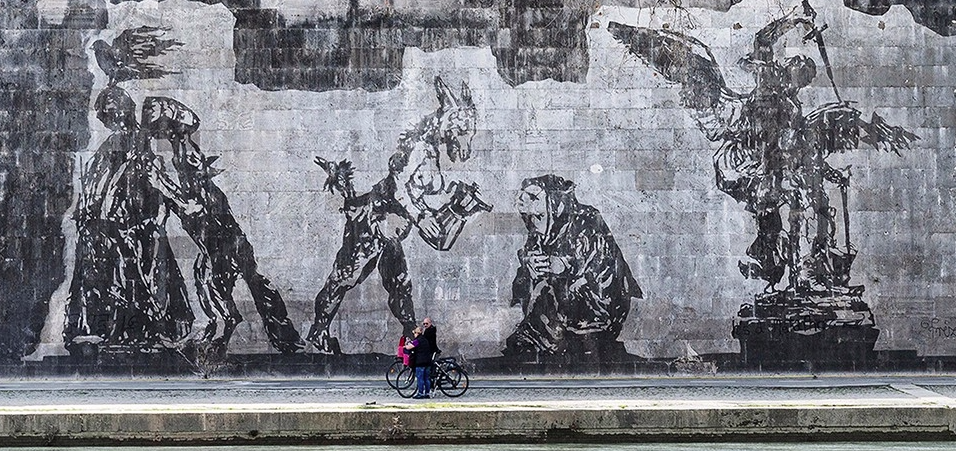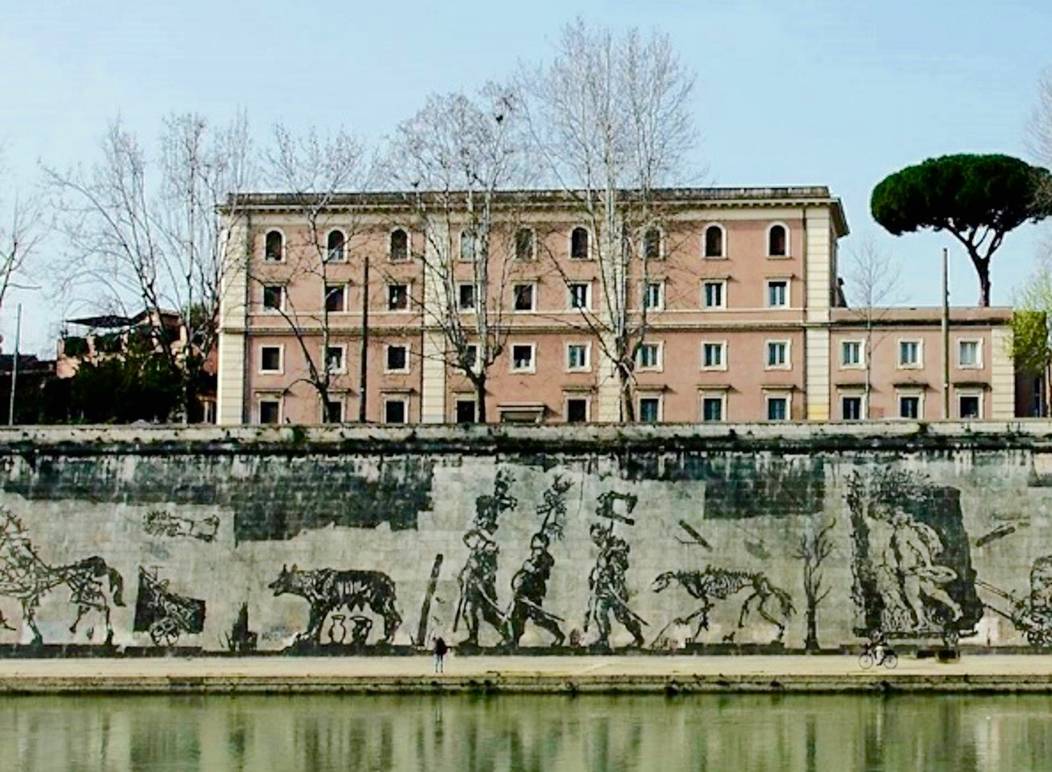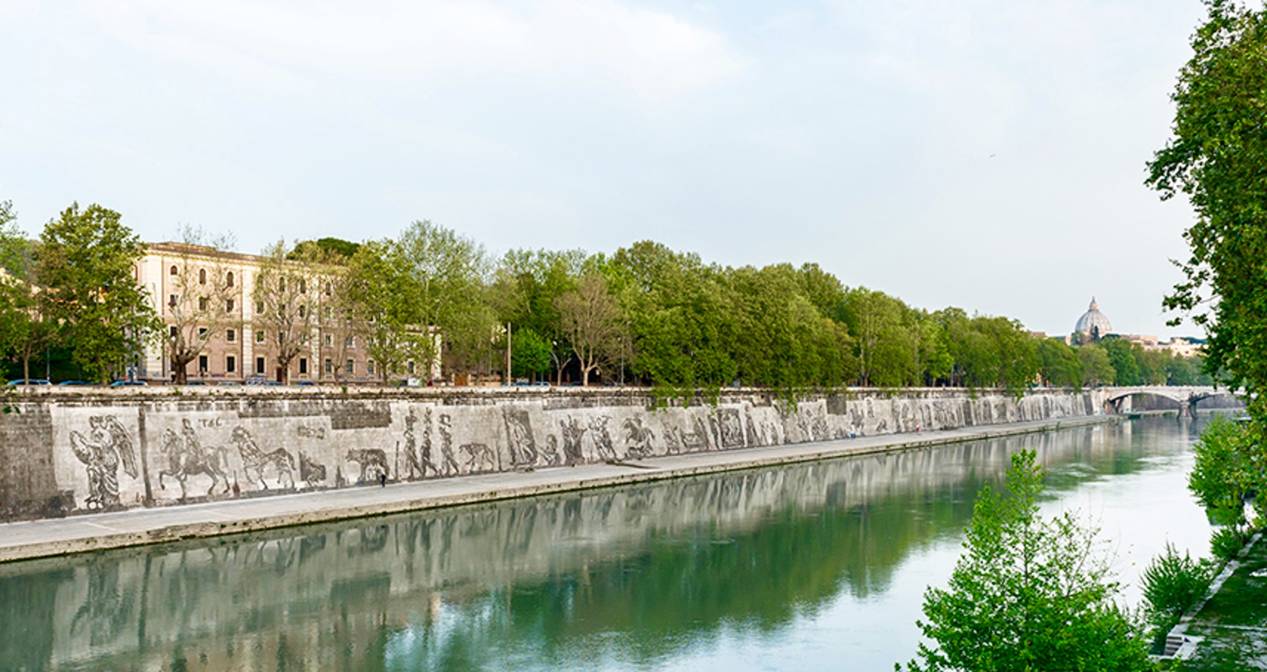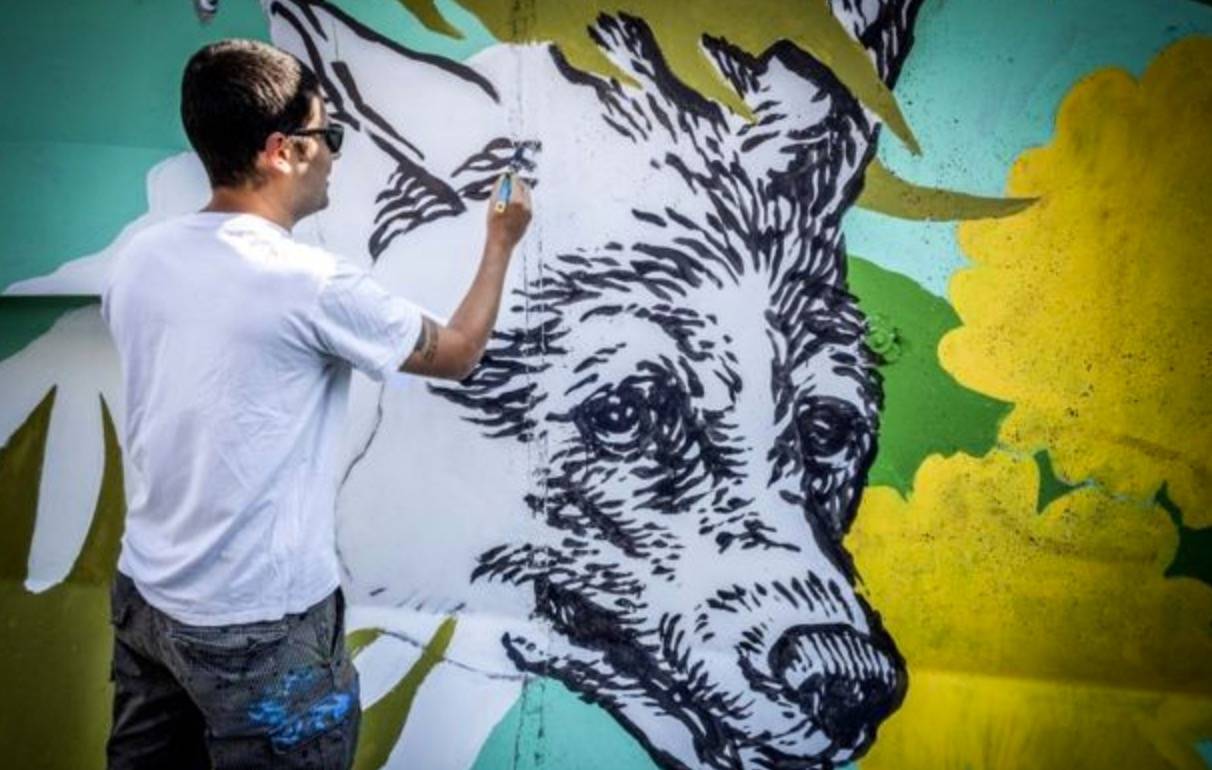Taking Pride in Italy's Outdoor Murales
Last Friday, April 21, Rome celebrated its traditional birthday, its 2,770th from the day in 753 BCE when legend has it that Romulus founded the city. Among the celebrations was on the Tiber River embankment an outdoor concert dedicated to William Kentridge, the artist who had created, for the previous year's birthday fete, a 1,804-feet long frieze illustrating some 90 crucial moments in the history of Rome, see >>>. The performance, which took place below Kentridge's paintings at the edge of the river between the Ponte Sisto and Ponte Mazzini, was directed by Roberto Gabbiani with solists from the Rome Opera and an 85-member chorus, accompanied by two pianists and five percussionists.
Kentridge's mural "Triumphs and Laments" has been called the artist's most ambitious project yet, and Rome's largest. Its procession of Romans over time shows gods, heroes and men -- some good, some bad. Sponsor for the work, which required a dozen years of planning, was Tevereterno Onlus, a non-profit association that promotes improvements to the Tiber River area. Financing came also through crowdfunding.
Born in 1955 in South Africa, Kentridge is noted for his prints, drawings -- often in charcoal -- and animated films. In gallery sales worldwide Kentridge's works command huge sums, including in the U.S., where Calvin Tomkins profiled him for New Yorker magazine in 2010. He is fond of Italy: in 2012, prior to his Tiber River frieze, he created a large sculpture in steel, "Il cavaliere di Toledo" (The Toledo Cavalier), located at the corner of Via Toledo and Via Diaz in Naples, adjacent to the city's subway station, famous for its lobby, a mini-archaeological museum.
The technique Kentridge used for his Tiber River procession is "reverse graffiti," also called "erasing." To create the figures he utilized stencils that covered the accumulated filth on the walls, after which , the entire surrounding wall area was power-washed clean. Within a few years, therefore, the stenciled figures that are made of filth will themselves dissolve within new layers of pollution deposits.
Before this can happen, however, graffiti vandals moved in almost immediately, putting their spray paint to work right on top of Kentridge's. Every day we who live in Italy are confronted by such graffiti vandalism, as in commuter trains whose windows are sometimes so overpainted with rubbish that the rider cannot see out. But on the other hand, serious outdoor wall murals also exist, and increasingly are attracting notice throughout Italy.
In Rome, ten professional "street artists" have left large, colorful mural paintings -- dubbed "murales d'autore" -- along the otherwise bleak walls of the Grande Raccordo Anulare (GRA), the ring road that encircles the city. Their work near the elevated highways, entrances to and inside the walls of tunnels is sponsored by the road works authority ANAS with the blessing of the Culture Ministry. Among these street artists is Lucamaleonte of Rome, whose "Eden Effect" evokes the natural world of birds, flowers, animals. Another is by Spanish artist Julieta XLF, on a wall by the Via Aurelia, where she has painted a wolf and a siren, signifying the meeting and possible clash between East and West with a nod to Italian Etruscan art.
The startling French artist Veks Van Hillik depicted the Roman wolf, symbolizing the nearby countryside endangered by rampant over-construction. Roman artist Mauro Pallotta re-interprets Roman baroque on a wall, while Camilla Falsini's skulls of oxen alligned on an altar refer to the sacrifices of Roman antiquity. Chekos is an artist from Lecce whose huge heads, under a bridge at Tor Vergata, are inspired by Nero and Agrippina. And the Florentine duo Furan and Camilo Nunez, both originally from Uruguay, on the GRA near the Via Trionfale, honor the memory of a six-year-old girl, depicted like a young saint.








































i-Italy
Facebook
Google+
This work may not be reproduced, in whole or in part, without prior written permission.
Questo lavoro non può essere riprodotto, in tutto o in parte, senza permesso scritto.